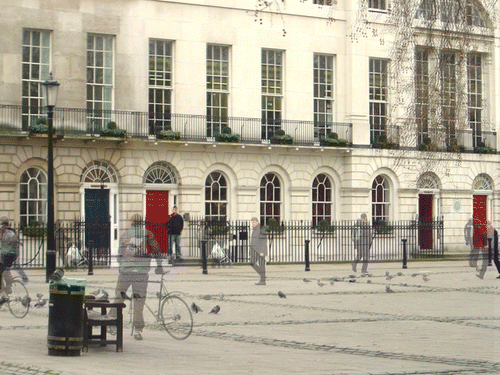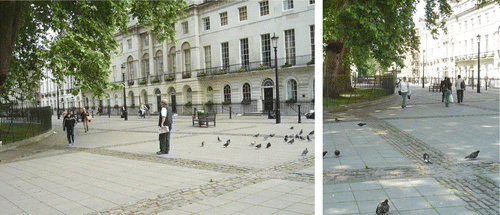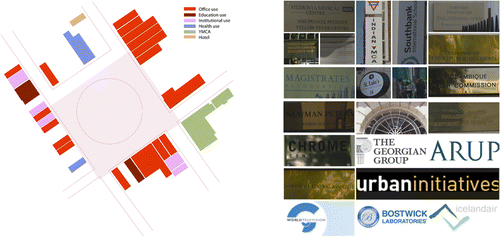Figures & data
Figures 1–3 Picadilly Circus (1 and 2), and Oxford Street (3). Photographs by the author, Spring 2005. (See online article for colour versions of all figures.)

Figures 9–12 Everyday life practices inducing a typical sense of flow. Fitzroy Square. Photomontages by the author, “Freeze-time photography project”, 2008.

Figure 14 12h Spectral diagram for walking-past rhythm. People walking past Fitzroy Square, 7 am to 7 pm, Monday, 5th September 2005. Walking-past practices intensify (accentuate) during rush hours and lunchtime; as dominant and fast practices they influence the way time is performed and sensed in the Square at particular times of the day.
Figure 15 12h Spectral diagram for informal seating rhythm. Fitzroy Square, 7 am to 7 pm, Monday, 5th September 2005. Informal seating practices on the pavement are largely confined to lunchtime; social seating (minimum two people) usually lasts longer than single informal seating practices.
Figure 16 12h Spectral diagram for formal seating rhythm. Fitzroy Square, 7 am to 7 pm, Monday, 5th September 2005. Formal seating practices (on benches) intensify around lunchtime, but also cluster in the mid-morning and mid-afternoon when the Square is less busy, while they are almost absent during the rush hours when walking past rhythms peak.
Figure 17 Sound spectrum diagrams juxtaposed with place-rhythm spectral diagrams combining travel and social rhythms of Fitzroy Square at three different times of the day: morning rush hour (7–9 am), mid morning rest time (10–12 am) and lunch-time encounter time (12 am–2 pm). They show a direct link between the soundscape and the (frequency, intensity and duration of) rhythmic events; unique constellations of place-rhythms shape distinct soundscapes at different periods of the day in the Square.
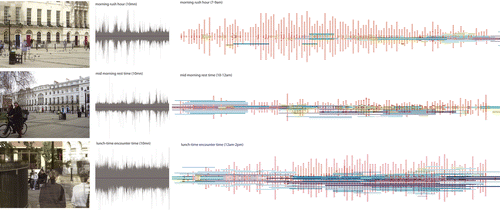
Figures 18–19 Synchronized ensembles of recurrent movements and social practices, and other natural and physical rhythms define the everyday temporalscapes of urban places. Photomontages by the author, Leece Street, Liverpool (18) and Piccadilly Circus, London (19), Winter 2005, “Freeze-time photography project”, 2008.
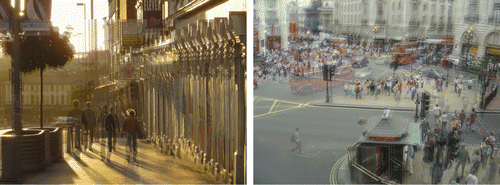
Figure 20 Fitzroy Square has been the subject of numerous field observations by the author, seeking to identify and decipher the various place-rhythms that define its temporal milieu. Photomontage by author, Summer 2005, “Freeze-time photography project”, 2008.
